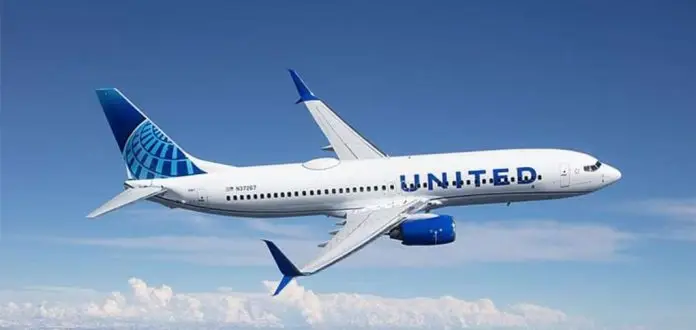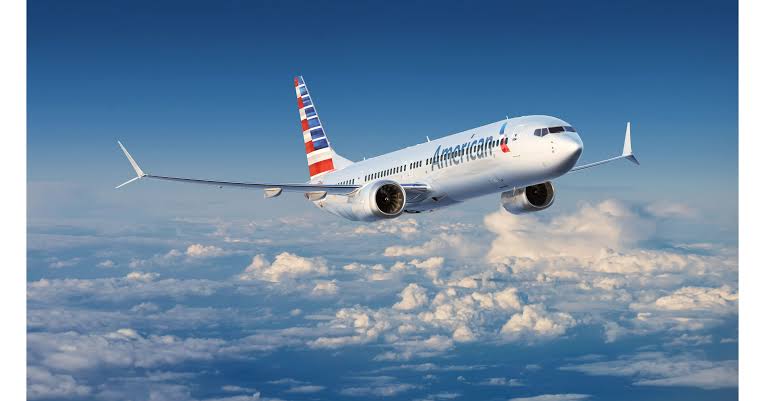United Airlines stock higher after mixed Q2 earnings report
United Airlines Holdings Inc – United Airlines Q2 profits top estimates as revenue, guidance fall short
United Airlines Holdings Inc
shares traded higher after stronger-than-expected profits for the second quarter overshadowed an earnings miss and softer guidance.
Adjusted earnings per share (EPS) for Q2 were $4.14, in line with the airline’s guidance and ahead of Street estimates of $3.97.
Revenue of $14.99 billion fell short of expectations of $15.13 billion.
Capacity was up 8.3% from the year-ago quarter.
For the third quarter, United Airlines projected adjusted EPS of United Airlines stock higher after mixed Q2 earnings report to $3.25, below estimates of $3.61, as it warned of the industry nearing an “inflection point,” noting that published schedule changes show a three-point decline in industry capacity growth rate.
“The revenue diversity advantages that we’ve built with our premium customers, Basic Economy customers, and domestic road warriors, on top of the world’s best loyalty program and leading customer service, have propelled our margins to near the top of the industry,” United Airlines CEO Scott Kirby said in a statement.
“Looking forward, we see multiple airlines have begun to cancel loss-making capacity, and we expect leading unit revenue performance among our largest peers in the second half of the third quarter.”
It maintained its full-year EPS outlook of $9 to $11 for 2024.
Shares of United traded up 2% just shy of $48, having gained 17% in the year to date.announced a non-brokered private placement offering to raise $500,000 by issuing units in the company at $0.10 per unit.
The junior explorer said it intends to use the proceeds of the offering to fund exploration on its properties and for general working capital purposes.
Each unit will consist of one share and one share purchase warrant entitling the holder to purchase an additional share for $0.15 for four years.
Additionally, the company said it is proposing to settle certain debts through the issuance of units at $0.10 per unit.
Amazon.com Inc (NASDAQ:AMZN)’s two-day sale event for Prime members brought in a record $14.2 billion, up 11% year-over-year, according to an analysis by Adobe Analytics.
Popular items included back-to-school supplies and electronics, such as tablets, TVs and Bluetooth speakers, Adobe said.
The average order size was up to $57.97 this year, up from $54.05 during 2023’s event, an analysis by Numerator found.
“Shoppers purchased fewer big-ticket items than we’ve seen in past years, and fewer participants placed multiple orders throughout the sale, indicating a shift to more conscious shopping and a preference for saving over splurging,” Numerator analyst Amanda Schoenbauer said in a statement.
The eCommerce giant said the event was its “biggest-ever” but did not reveal a specific sales figure.
It said “millions more” Prime members shopped during the event than did so during Prime Day 2023 with the help of its AI-powered shopping assistant Rufus.
Popular brands during the sale were Sol de Janeiro, Apple, Dyson, and Ring, and small businesses, including TruSkin, ALOHA, Blueland, and Native Pet, Amazon said.
Other popular purchases were subscriptions, including for Amazon Music Unlimited, Kindle Unlimited, and Audible.
United Airlines Q2 Performance and Future Outlook
United Airlines Holdings Inc. recently reported its second-quarter earnings, showing a mix of strong profits but softer-than-expected revenue and guidance. Despite these mixed results, the airline’s shares traded higher, reflecting investor confidence in its overall strategy and future prospects.
Strong Q2 Profits
For Q2, United Airlines reported adjusted earnings per share (EPS) of $4.14, which exceeded Wall Street expectations of $3.97 and was in line with the company’s guidance. This strong performance highlights United’s ability to manage its operations effectively despite a challenging industry environment. The airline’s capacity increased by 8.3% compared to the same quarter last year, demonstrating its efforts to expand and meet rising travel demand.
Revenue, however, came in at $14.99 billion, falling short of the anticipated $15.13 billion. This revenue shortfall was a result of various factors, including competitive pressures and pricing adjustments in response to market conditions. Nonetheless, the strong EPS performance overshadowed the revenue miss, leading to a positive reaction in the stock market.
Guidance and Industry Inflection Point
Looking ahead to the third quarter, United Airlines has projected an adjusted EPS of $3.25, below the market consensus of $3.61. This cautious outlook is attributed to an anticipated “inflection point” in the industry, with capacity growth rates expected to decline. Published schedule changes indicate a three-point decline in industry capacity growth rate, suggesting that airlines are beginning to cut back on loss-making routes.
CEO Scott Kirby emphasized the importance of United’s revenue diversity advantages in navigating these challenges. “The revenue diversity advantages that we’ve built with our premium customers, Basic Economy customers, and domestic road warriors, on top of the world’s best loyalty program and leading customer service, have propelled our margins to near the top of the industry,” Kirby said.
Full-Year Outlook
Despite the softer guidance for Q3, United Airlines has maintained its full-year EPS outlook of $9 to $11 for 2024. This reflects the company’s confidence in its ability to manage costs, optimize capacity, and leverage its diverse revenue streams. The airline expects to see leading unit revenue performance among its largest peers in the second half of the third quarter as competitors continue to cancel unprofitable capacity.
Stock Performance and Market Confidence
United Airlines’ stock has responded positively to the Q2 earnings report, trading up 2% to just shy of $48 per share. Year-to-date, the stock has gained 17%, indicating strong investor confidence in the airline’s strategic direction and financial health.
Strategic Initiatives and Market Position
United Airlines’ strategic initiatives focus on expanding its market presence and enhancing its product offerings to cater to a wide range of customers. The airline’s approach to capturing both premium and basic economy segments has been particularly effective. Premium revenue saw an 8.5% increase in Q2 compared to the same quarter in 2023, driven by a higher uptake of premium services. Basic economy revenue also grew significantly, up 38% year-over-year, as more passengers opted for budget-friendly options.
The airline’s ability to attract and retain “domestic road warriors”—frequent domestic travelers—has further strengthened its market position. United’s loyalty program and customer service have played a crucial role in this success, providing added value to its frequent flyers.
Future Prospects and Challenges
United Airlines faces both opportunities and challenges in the coming months. The anticipated capacity adjustments in the industry present an opportunity for United to optimize its operations and improve margins. By carefully managing its capacity and focusing on profitable routes, the airline aims to enhance its financial performance.
However, the industry-wide slowdown and competitive pressures remain significant challenges. United must continue to adapt its strategies to maintain its competitive edge and navigate the evolving market landscape. The airline’s ability to balance growth and profitability will be key to its success in the near term.
United Airlines delivered strong Q2 profits that exceeded expectations, despite revenue and guidance falling short. The airline’s strategic focus on revenue diversity and market expansion has positioned it well to navigate industry challenges and capitalize on future opportunities. As United Airlines looks ahead to the second half of the year, its ability to manage capacity and optimize operations will be critical to achieving its financial targets and maintaining investor confidence.
United Airlines’ Competitive Position and Strategic Initiatives
United Airlines has established a competitive position in the airline industry through its strategic initiatives aimed at capturing both premium and budget-conscious travelers. The airline’s approach to revenue diversity has been a key driver of its financial performance.
Revenue Diversity and Market Segments
United Airlines has successfully captured a diverse range of revenue streams by catering to different market segments. The airline’s premium services have seen significant growth, with an 8.5% increase in premium revenue in Q2 compared to the same period in 2023. This growth is driven by a higher number of passengers opting for premium seats and services, reflecting the value that United’s premium offerings provide to customers.






